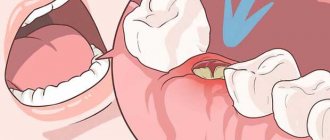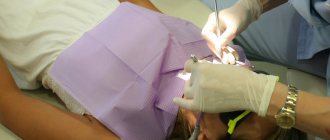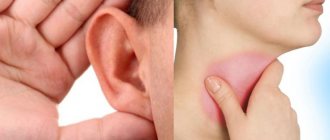Ear pain is a fairly common symptom. Painful sensations in this case give the patient a lot of unpleasant moments, and it is very difficult to simply “endure” such pain. It is noteworthy that pain in the ear is not always associated with diseases of the hearing organ. Such painful sensations can also be caused by other organs that radiate, that is, “giving off,” to the ear. A condition in which the ear hurts, but there is no inflammation in it, is called otalgia.
Otalgia can be caused by many reasons:
Temporal arteritis
The disease is an inflammation of the vessels of the temporal artery.
If the inflammatory process spreads to the ear artery, the patient will also experience pain in the ears. This disease is typical for older women. It causes blurred vision, headaches, pain in the temples, and increased fatigue. Make an appointment right now! Call us by phone or use the feedback form
Sign up
Along the branches of the vagus nerve, pain can radiate to the ear from the esophagus, thyroid gland, and organs of the cardiovascular system.
If you have ear pain, you should definitely consult with an otolaryngologist, since this condition may signal the presence of serious diseases in the body. If the ear is healthy, no abnormalities have been identified, and the pain does not go away, it is necessary to diagnose the nose, larynx, pharynx and, if necessary, other organs to identify the cause of otalgia. Further treatment will depend on the diagnosis.
Why does my cheekbone hurt?
Traumatic injuries
The most common injury to the zygomatic region is bruise.
Occurs in fights, less often when falling or hitting a hard surface (for example, a door frame). The pain is moderate and subsides quickly. Local swelling and hyperemia are observed, abrasions are possible. Opening the mouth is not difficult, speech is not changed. All symptoms disappear within a few days or 1-2 weeks. When the zygomatic bone is fractured, the pain is very sharp and intense. Bruising is detected, swelling quickly spreads to the adjacent parts of the face. There is pain when trying to open the mouth, numbness of part of the cheek, wing of the nose and upper lip, and sometimes diplopia. If the integrity of the maxillary sinus is violated, nosebleeds develop and subcutaneous emphysema is possible. When fragments are displaced, a step is felt in the cheekbone area.
The zygomatic bone participates in the formation of the orbital wall. If the bone wall of the orbit is damaged, along with the symptoms listed above, limited mobility of the eyeball, visual impairment, subcutaneous emphysema, exophthalmos or endophthalmos are detected. Orbital injuries can also be accompanied by double vision, strabismus, and in severe cases, blindness.
Osteomyelitis
Severe tugging, throbbing pain in the cheekbone may be a consequence of post-traumatic osteomyelitis. The disease develops after an open fracture, surgery on the zygomatic bone and nearby tissues. The wound becomes swollen, its edges turn red. Suppuration, intoxication, and general hyperthermia are observed. After opening the abscess, pain and inflammation subside, and a fistula tract forms in the wound area.
Neuralgia
Burning, shooting pain in the cheekbone, reminiscent of an electrical discharge, is characteristic of damage to the second branch of the trigeminal nerve. Pain sensations spread from the side of the face to the center, affecting the upper part of the cheek, upper jaw, upper lip, and nasal mucosa. Attacks of neuralgia last up to 2 minutes and are repeated several times, causing patients to freeze in place.
In patients with ganglionitis of the pterygopalatine ganglion, intense prosopalgia predominates in the area of the cheekbone, eye, hard palate and base of the nose, but the symptom is never clearly localized, since a large number of nerve branches causes the spread of pain to adjacent parts of the face, gums, teeth, and sometimes the back of the head, neck , temple and ear. A distinctive feature of the pathology is pronounced autonomic symptoms: lacrimation, hypersalivation, hyperemia and swelling of half the face.
Sometimes the cause of radiating pain in the cheekbone is ganglionitis of the geniculate ganglion, although for this variant of ganglioneuritis pain in the ear with irradiation to the back of the head, face and neck is more typical. Painful sensations are paroxysmal in nature, and in some patients they are combined with neuritis of the facial nerve.
Cheekbone pain
Muscle damage
In patients with bruxism, bilateral aching pain in the cheekbones is caused by overstrain of the masticatory muscles during repeated nightly episodes of teeth grinding. Drowsiness, headache, toothache, and soreness in the jaw area are possible. Chips, cracks, hyperesthesia and pathological abrasion of teeth are often observed. With myofascial syndrome, pain increases gradually and is a consequence of constant muscle tension when clenching the jaw against the background of overload, stressful situations, and neurotic disorders.
Dental pathologies
Irradiation into the cheekbone is observed when the upper premolars and molars are affected on the corresponding side. In some cases, the pain in the cheekbone is so pronounced that it prevails over the pain in the teeth. The symptom can be observed after tooth extraction, with alveolitis, pulpitis, periodontitis. With deep caries, it does not occur spontaneously and is associated with food entering the carious cavity.
Otolaryngological diseases
The maxillary sinus is located in the body of the maxillary bone. Its wall borders the zygomatic bone, which causes pain to spread to the cheekbone when this sinus is affected. The symptom appears in the following diseases:
- Acute sinusitis.
There are bursting pains in the projection of the sinus, cheekbone, root of the nose and forehead, which intensify when palpated. Intoxication syndrome, fever, and nasal congestion are detected. - Aerosinusitis.
A similar localization of pain is observed with aerosinusitis (if the maxillary sinus is affected), but hyperthermia and intoxication occur only with secondary infection. - Acute pansinusitis.
A clear clinical picture is characteristic. Chills, febrile temperature, and severe intoxication occur. The general condition is serious. Pain from the cheek and cheekbone spreads to the eyebrows, orbits, crown and back of the head, sometimes extends to the lower jaw, is combined with a constant diffuse headache, and with a prolonged course is supplemented by progressive neurological disorders (insomnia, weakness, paresthesia).
In addition, acute bursting pain in the cheekbone is typical of one of the orbital complications of sinusitis - orbital osteoperiostitis. The spread of the inflammatory process to the lower outer wall of the orbit causes the involvement of the zygomatic bone. Along with the symptoms of sinusitis, significant swelling of the periorbital tissue, exophthalmos, displacement and limitation of eye mobility are detected.
Other reasons
Headaches with possible irradiation to the cheekbone are observed in diseases with a completely unclear etiology - cluster headaches and paroxysmal hemicrania. Sometimes the epicenter of pain in the cheekbone with spread to other areas is noted with atypical facial pain. Pain syndrome of psychogenic origin against the background of stress or overwork is formed in emotionally unstable, suspicious people. In some cases, the symptom is found in patients with hypochondria and occurs in delusional and hallucinatory disorders.
Which doctors should I contact?
The choice of doctor for discomfort in the jaw area depends on the pathology that led to such symptoms.
If you have jaw pain, you can go to the following specialists:
- therapist (will examine the patient and give a referral to the right doctor);
- traumatologist;
- dentist;
- ENT;
- infectious disease specialist;
- cardiologist;
- neurologist;
- oncologist.
Advice! In case of acute abscesses and other purulent pathologies, it is advisable to immediately contact a surgeon.
What kind of diagnostics awaits?
Diagnostic methods are prescribed by the doctor after a thorough examination of the patient and studying his medical history. To make a diagnosis, the following research methods :
- laboratory tests to determine the presence of infections, viruses and other pathogenic microorganisms;
- radiography;
- CT scan;
- Magnetic resonance imaging;
- arthrography;
- electromyography.
If the doctor suspects the development of a malignant tumor, the patient will be prescribed blood tests for tumor markers. If there are lumps and ulcers, a cytological examination is performed (piercing the lump and collecting a fragment of internal secretion). If the patient has enlarged lymph nodes, a biopsy is performed.
Symptoms
The main symptom that unites all these conditions is pain in the ear and neck . Depending on the diagnosis, other symptoms appear, which, however, often overlap in different pathological processes. This is due to the fact that many of them affect the nerve endings of the spine, disrupting blood circulation and supply to the brain. Therefore, they are often accompanied by dizziness, unsteadiness, loss of coordination, nausea and vomiting. Inflammatory processes are characterized by increased temperature and impaired mucus outflow.
Mumps, which is popularly called mumps, is manifested by swelling , maybe on one side or both. The pain intensifies when pressing on the neck area under the ear, as well as when chewing and swallowing.
Neuralgia of the facial nerve, accompanied by impaired facial expressions , shooting pain.
Inflammation of the maxillary sinuses is usually characterized by increased pain when bending over and nasal congestion on one side.
With arterial hypertension, there is a persistent increase in blood pressure .
Possible complications
If you do not promptly pay attention to the pain in the jaw area that extends to the ear, you may encounter unpleasant complications . Among them:
- partial or complete hearing loss;
- increased sensitivity of teeth, development of carious processes;
- muscle tension, which leads to pain in the back, shoulders, chest;
- dizziness, visual impairment, appearance of “spots” before the eyes;
- sleep disturbance, insomnia, and resulting depression;
- photophobia (fear of bright lighting);
- pain in the eyeball area;
- the appearance of tumor formations in the jaw area (during oncological processes);
- metastasis to vital organs.
In the initial stages of pathology development, the patient has a considerable chance of a full recovery. If you ignore the problem, the risk of encountering unpleasant consequences increases. In such cases, you will have to resort to surgery.
Pain in the jaw area is a serious symptom that signals the progression of many diseases. If discomfort is detected, the patient must take a painkiller tablet, apply a cold compress to the problem area (if damaged) and call a doctor. Such symptoms should not be ignored, as they can lead to problems with hearing or vision.
After recovery, you need to monitor the condition of your teeth, regularly visit the dentist, monitor your diet and the quality of food you eat, avoid stressful situations, and check every year for the presence of cancer processes in the body.
Causes
Pressure in the ears occurs due to a number of factors and ailments. These may include serious illnesses and completely harmless ones, for example, prolonged listening to music at high volumes in headphones. The most common causes of pressure in the ears are:
- otosclerosis (bone growth) and inflammation in the middle ear;
- pathologies of a neurological nature (cervical osteochondrosis, pinched vertebrae)
- atherosclerosis of blood vessels in the brain;
- high/low blood pressure of various etiologies (obesity, alcohol and tobacco abuse, depression, stress, heart problems, physical exercise, vascular disorders, etc.);
- injuries of the skull, head;
- tumor (acoustic neuroma) of the auditory nerve;
- otitis, sinusitis, rhinitis, earwax, aerootitis;
- everyday (natural) reasons - long telephone conversations, sleep disturbances, prolonged listening to music, overwork, sudden changes in atmospheric pressure, water getting into the ears, flying on an airplane, diving, etc.










